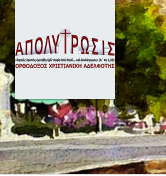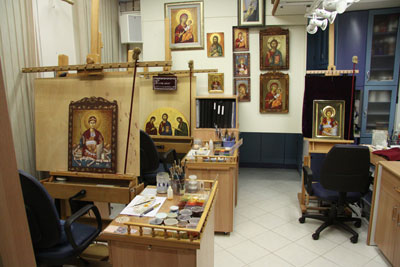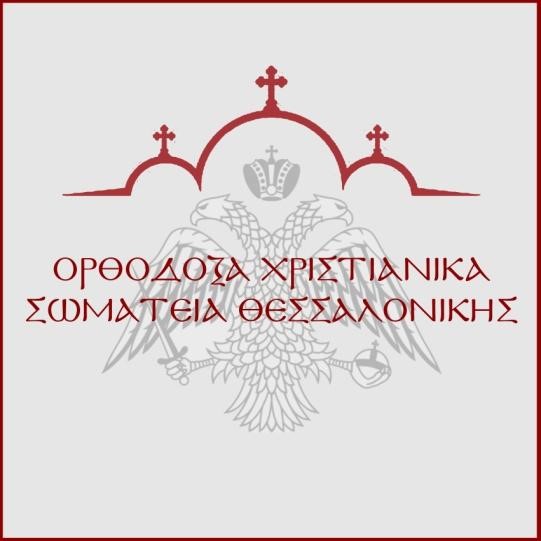Dr Despoina M. Kalogeraki, Bth, Mth, PhD
The Value of Pedagogy
 Pedagogy for the eminent father of the 4th century, is “an art above all arts” and “a science superior to all other”1. Every art is useful and every piece of knowledge is necessary. Nevertheless, to know how to form young people’ soul is the ultimate task. If a coppersmith or a goldsmith, St. Chrysostom explains, fashion their pots and vessels with great effort, the teacher, “has a far mightier craft (than theirs)”, namely, “he is beating into shape not vessels of gold, but the soul, which is more precious than all gold, even as the smith hammers out his vessel. For it is no material vessel that he is working at, but he is freeing their soul from all imaginations belonging to this life”2.
Pedagogy for the eminent father of the 4th century, is “an art above all arts” and “a science superior to all other”1. Every art is useful and every piece of knowledge is necessary. Nevertheless, to know how to form young people’ soul is the ultimate task. If a coppersmith or a goldsmith, St. Chrysostom explains, fashion their pots and vessels with great effort, the teacher, “has a far mightier craft (than theirs)”, namely, “he is beating into shape not vessels of gold, but the soul, which is more precious than all gold, even as the smith hammers out his vessel. For it is no material vessel that he is working at, but he is freeing their soul from all imaginations belonging to this life”2.
Moreover, the work of a pedagogue is greater than the work of even, a king. For, the latter is in charge of ruling his town with justice, but the former is expected to lead the soul of youth, which happens to be not an ordinary town but a “golden town”3. Thus, the fact that the soul of a child is a “golden town”, makes the work of a pedagogue valuable and superior to all other professions. Besides, St. Chrysostom exhorts us, “you should consider everything of secondary importance in relation to the care of children”4. For, if we managed to solve all social problems but we failed to solve the issue concerning the pedagogy of children, we would succeed nothing. On the contrary, if we managed to take care of the upbringing of our children, there would be no unsolved problem5. Thus, for St. Chrysostom, the value of the agogi is as much as the value of the soul· and, needless to say, there is nothing equal to soul. For, it is written, “what will it profit (us) if (we) gain the whole world but forfeit (our) life? Or what will (we) give in return for (our) life?” (see Matt 16:26)6.
At this point we should point out what we have already mentioned above namely, the fact that the basis of St. Chrysostom’s pedagogy is his theology. The prototype of the “good and virtuous” (Gk καλός κἀγαθός)7 that was set forth when John Chrysostom studied in Athens near famous teachers and philosophers, who happen to be idolaters, was not enough for him8. Ηis pedagogical ideas were not limited to the human categories. The task of agogi becomes priceless when one acknowledges the value of human life, the value of humans’ soul. Having as starting point that “humans are an icon of God”9 and they are worthy of honor “more than anything in God’s creation”10, Chrysostom as an anthropologist, underlines both the greatness and at the same time, the tragedy of human nature. He teaches that human nature can only be comprehended if proper attention to its origin is to be paid. All humans are God’s live icons. And among all people, children represent “the great legacy”11 that humans have. Hence, the task of pedagogy is the highest one· in Chrysostom’s words, “the art of the arts”12.
.................................................
1. “For teaching (ruling spiritually) is an art, not merely a dignity, and an art above all arts. For if the rule of those without is an art and science superior to all other, much more this. For this rule is as much better than that, as that than the rest· rather, even much more”. See, On Corinthians, PG 61, 506· See also, St. Sakkos, “The art of the arts”Pedagogical courses by St. John Chrysostom, ed. Christianiki Elpida, Thessaloniki 2014.
2. On Acts, PG 60, 204.
3. About vanity and how are the parents supposed to raise their children 54, ΕΠΕ 30, 674.
4. On Ephesians, PG 62, 151.
5. Chrysostom, On Ephesians, PG 62, 151.
6. It has to be noted that in this article the NSRV edition of the Bible is to be followed.
7. See M. Siotis, Christianity and Humanism, Athens 1969.
8. The use of the phrase “καλόςκἀγαθός” is attested since Herodotus and the classical period. The phrase is adjectival, composed of two adjectives, καλός (beautiful) and ἀγαθός (good in the sense of virtuous), the second of which is combined by crasis with καί (and) to form κἀγαθός. There is thematic discussion of kalokagathia (καλοκαγαθία noun) in Aristotle’s Eudemian Ethics (Book VIII, ch. 3 (1248b).
9. “For if men for making statues and painting portraits of kings enjoy so great honor, shall not we who adorn the image of the King of kings, (for man is the image of God,) receive ten thousand blessings, if we effect a true likeness?”. See, On Ephesians, PG 62, 154.
10. On the Gospel of John, ΕΠΕ 14, 32.
11. On Ephesians, PG 62, 546.
12. On Corinthians, PG 61, 506.
Copyright © 2021 by Orthodox Christian Association «ΧΡΙΣΤΙΑΝΙΚΗ ΕΛΠΙΣ» ΟΡΘΟΔΟΞΗ ΑΔΕΛΦΟΤΗΤΑ. Used by permission. All rights reserved.











